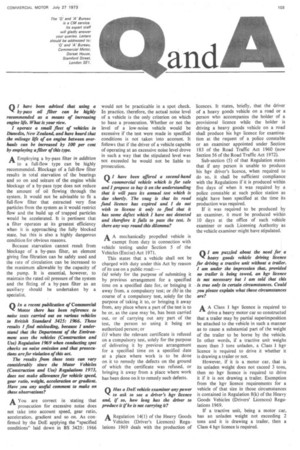Q In a recent publication of Commercial Motor there has been
Page 105

If you've noticed an error in this article please click here to report it so we can fix it.
reference to noise tests carried out on various vehicles to British Standard 3425: 1966. These results find misleading, because I understand that the Department of the Environment uses the vehicles (Construction and Use) Regulation 1169 when conducting spot checks on noise endssion and that prosecutions are for violation of this act.
The results from these tests can vary considerably since the Motor Vehicles (Construction and Use) Regulations 1973, does not make allowance for vehicle speed, gear ratio, weight, acceleration or gradient. Have you any useful comment to make on these observations?
A You are correct in stating that prosecution for excessive noise does not take into account speed, gear ratio, acceleration, gradient and so on. As confirmed by the DoE applying the "specified conditions" laid down in BS 3425: 1966
would not be practicable in a spot check. In practice, therefore, the actual noise level of a vehicle is the only criterion on which to base a prosecution. Whether or not the level of a low-noise vehicle would be excessive if the test were made in specified conditions is not taken into account. It follows that if the driver of a vehicle capable of operating at an excessive noise level drove in such a way that the stipulated level was not exceeded he would not be liable to prosecution.
























































































































































